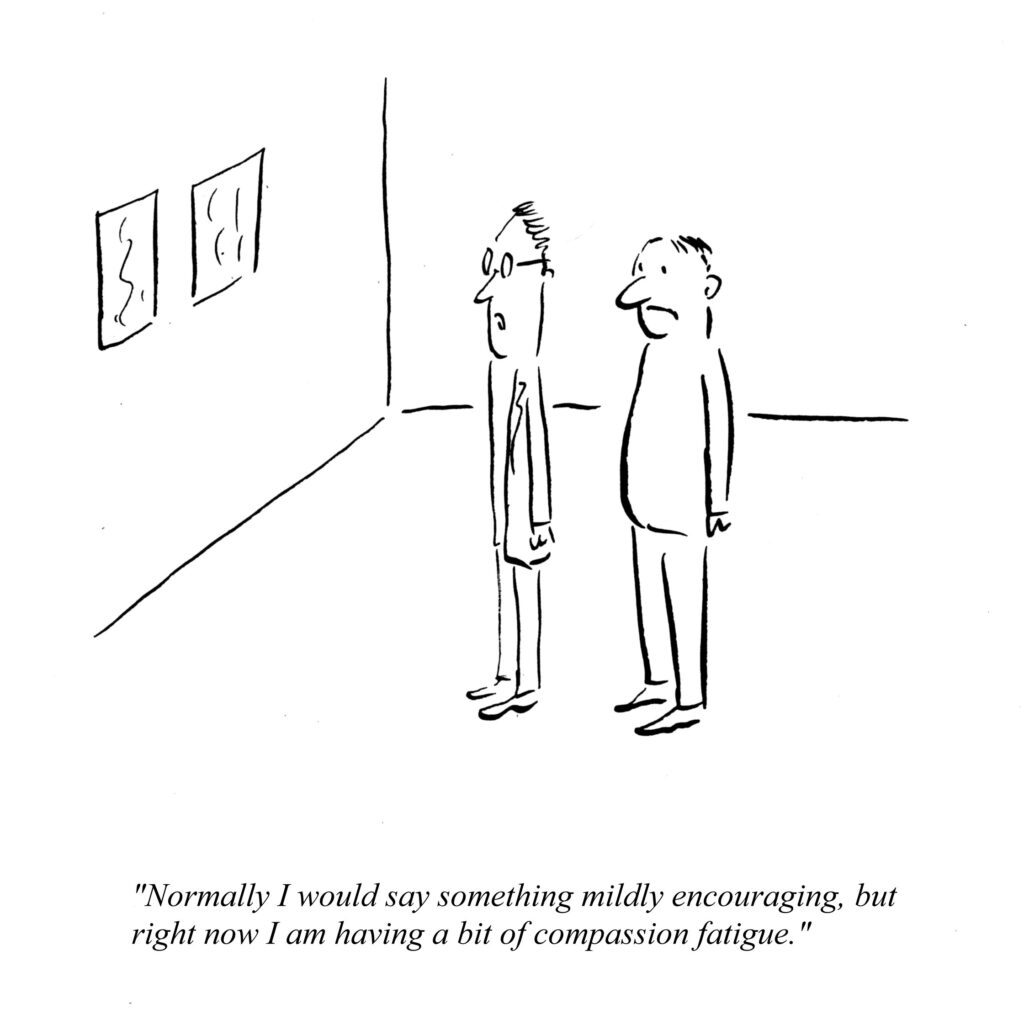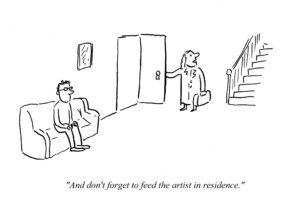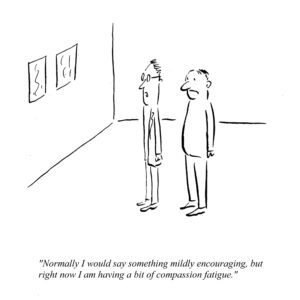
Pablo Halguera

It isn’t easy. Deciding to pursue one’s vocation as an artist within the system involves tacit acceptance of probable economic adversity and elusive professional returns, in a capricious field of unreliable values. The compulsion to make sense of life via artistic investigation is a bright new adventure in one’s twenties, but it comes under increasing pressure from practicalities as the years go by. Artists are at the mercy of curators, critics and collectors supporting them, and never quite sure if that will happen at all.
It is pointless to blame this power imbalance on the soullessness of art fairs, wealthy dealers, egregious nepotism, and an inbred hierarchy—because the system doesn’t care and it’s not going to change to better accommodate artists. But what complicity do artists have in the conservation of this status quo that is so detrimental to the majority of them—those workers manufacturing the products that fuel the cultural economy?
What is meant by failure depends on what is meant by success; this typically means reaching audiences through gallery and museum exhibitions, critical appreciation, sales, and perhaps leaving a legacy to art history. This involves incredible effort, timing, tenacity, serendipity, and absolutely no guarantees. There is scant logic as to who will gain traction, at least regarding quality. Only rarely will consensus form around a uniquely able artist who becomes an urgent conduit for this or that aspect of the zeitgeist, or who elucidates environmental tectonics with genuine aesthetic and intellectual faculties. Art that is incapable of this—most of it—isn’t constitutionally important beyond decorative purposes, or localized meaning. It’s the job of gallery press relations teams to try and turn irrelevance into profound meaning.
Among the multitudes competing as professional artists, the names of only a fraction will ever be widely known, and fewer deserve to be. Artistic production is necessary as a barometer for culture temperatures, change and record, but it is exceedingly difficult to make efficaciously. It’s instructive to remember that the business of art is based on the opinions of gallery owners, curators, directors, or collectors who are in positions to maneuver their preferences into canonical “truth” via exhibitions, retrospectives, publications, awards, or auctions. But the core of artistic appreciation is simply what one likes, and nobody’s taste is more valid than anyone else’s. It has always been the job of influencers convince us otherwise.
Into this maelstrom enters each generation of MFA-educated artists, indoctrinated into a mindset of self-diminishment by the inadequacies of their school experience, and their eventual compliance with art world strictures. They are taught to be downtrodden, and must begin jousting for attention by participating in the annual crucible of residency and grant applications that bestow a certain credence. Very few will be awarded them with the consistency required to ignite a viable career.
Another version of success is arranging one’s life so that art can be made at all, and the commitment to, and sharing of one’s practice with one’s community. But absent recognition, at what point does artmaking decline into mere hobby? There is no reasonable argument for more art, rather, for more incisive art. Instead, thousands of students are admitted by art schools pleased to funnel them through their cash registers. After all that investment, most graduates will do no more than contribute to a wretched excess of irrelevant artworks.
The system has done its greatest damage in pressing the lie that there is nobility in the higher purpose of pursuing one’s art while relinquishing expectation of fair payment. No plumber or electrician would offer free services the way that art workers are expected to, in return for padding a resume. This standard robs artists of basic transactional confidence that is difficult to develop later. The dictate is that crass commercialism may be pursued but unless achieved through the approved gallery channels, one must forfeit criticality.
Art criticism’s current feebleness (and dereliction of duty) is in part due to a rising tide of near-illiterate contributors at poorly edited internet platforms. These reports are regularly spattered with the egotist’s ejaculate, “I” and “me,” reducing them to rash opinion and tawdry self-promotion, not helpful, dispassionate consideration. Every word of this voluminous sediment is then fished out and regurgitated by artists as proof (or hope) that their exhibitions mattered. These deficient texts would be better avoided because by sharing them artists divulge how meagre are the crumbs that they will settle for.

When any critical notice is paid, artists often post a giddy “thank you” to the writer, confirming how “excited” they are for the “thoughtful” review. It is a gesture of subjugation. Noticeably, when a review is negative, or even gentle rebuking, such thanks are less forthcoming.
Artists further erode intrigue in their practices, by their prostration to Instagram and its lexicon. It can be a communicative asset, but the clamor for visibility results in unwise sharing of unresolved ideas and silly lifestyle pictures of steaming coffee cups, quasi-research materials or morning light hitting the studio wall just so. Works-in-progress are by nature not ready to be viewed (even if they have their own hashtag #wip) but there is such pressure to shoehorn oneself into a marketable brand—the antithesis of creative investigation. The quest for cheap attention gained by such posts risks undermining an artist’s focus in the studio, and the quality of precious time spent making, while frittering audience compulsion to see the work in person.
Gushing compliments between peers are another online conceit. Everyone in a group situation is described as “wonderful” or “talented,” and the poster is often “honored” to be among them. The definition of “honored” reveals the lack of humility in applying it to oneself. But suggesting that all ten fellow-artists in a group exhibition are “incredible” or “amazing” is extremely unlikely. Blanket admiration of every and any artist that one comes into contact with is not how taste—or honesty—proceeds. Such hyperbole diminishes the artist’s dignity, and seems fawning, overly grateful, and inauthentic, because what they are saying cannot be true. When artists ooze such gratitude to “everyone who came out for my opening” do they wonder how many didn’t show up because they’d already seen so much online?
These quirks are symptomatic of the current neutered condition of art discourse, which has been exchanged for echo chamber whining, partly inspired by politics and hyper-sensitivity. It constitutes a Great Depression of thought. Does the current government mean we must huddle together and suspend criticality despite how fantastically awful many artists are? Without forthright acknowledgment that the ideas underwriting many group exhibitions are meritless, and the art within, risible, it is not discussion that is being expanded; it is a miasma of fraudulent niceties. What use is a commonwealth of critical minds when its language has been lobotomized? If this charade gave way to intellectual verisimilitude, and the risk of shedding “likes,” or offending some readers, it might initiate more fruitful results and make social media a more dynamic tool. Artists ought to close their digital mouths and get back to work.

Artists are required to submit to other humiliations to gain entry to the art system. These include gifting artworks for benefit causes while they struggle to pay the rent; having to speak publicly about their work, which many artists—solitary, internal thinkers—are rarely equipped to do well; hustling to be seen at the right events; and the degradation of having to produce an artist’s statement, wherein grandiose third-person claims read like hospice care for words, terminally cliched after years of abuse. Shouldn’t the work itself be the artist’s statement?
Are these policies what artists should reap from the arena they enter with sterling intent? One they commit to, and struggle financially in? Artists may feel hard done by, but they are too comfortable, in the West at least, to demand changes, and too selfish to upend for posterity a system that they do not realize they control.
Perhaps the road to equity and stake-holding is smaller, quieter. Artists might tinker with adjustments in thinking. To begin with, an artist might look deep within and determine if he must be an artist at all—have I anything to say, really; is my work adding meaningfully to public discourse, or am I an indulgent hobbyist? Despite it so often appearing otherwise, ingenuity is still rewarded, and there are marvelous galleries searching for it. Artists might also make modest, consistent requests for respectful recompense, that would be audacious and empowering. Expect, and ask, rather than hope and wait. Do what is necessary to connect properly with allies, gallerists, writers and curators of like mind, because success is almost entirely about who one knows, and that won’t change. It is reasonable to request a return on the immense wealth made from artists’ efforts. In modifying approaches, they might forge larger, consequential improvements for future generations. Redirection is required from the factory floor up. Artists could collectively achieve progress instead of groveling as serfs to a structure which ignores, tolerates or loathes most of them, and plunders a few for its own ends. That would be a legacy. Until then, artists will remain little more than breeding sows in the art world’s piggery.
Darren Jones, New York Editor
Volume 33.no.1 September / October 2018 pp 7-9

